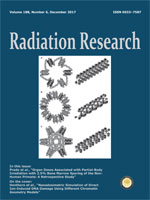
Long-Term Deficits in Behavior Performances Caused by Low- and High-Linear Energy Transfer Radiation
Nanodosimetric Simulation of Direct Ion-Induced DNA Damage Using Different Chromatin Geometry Models
